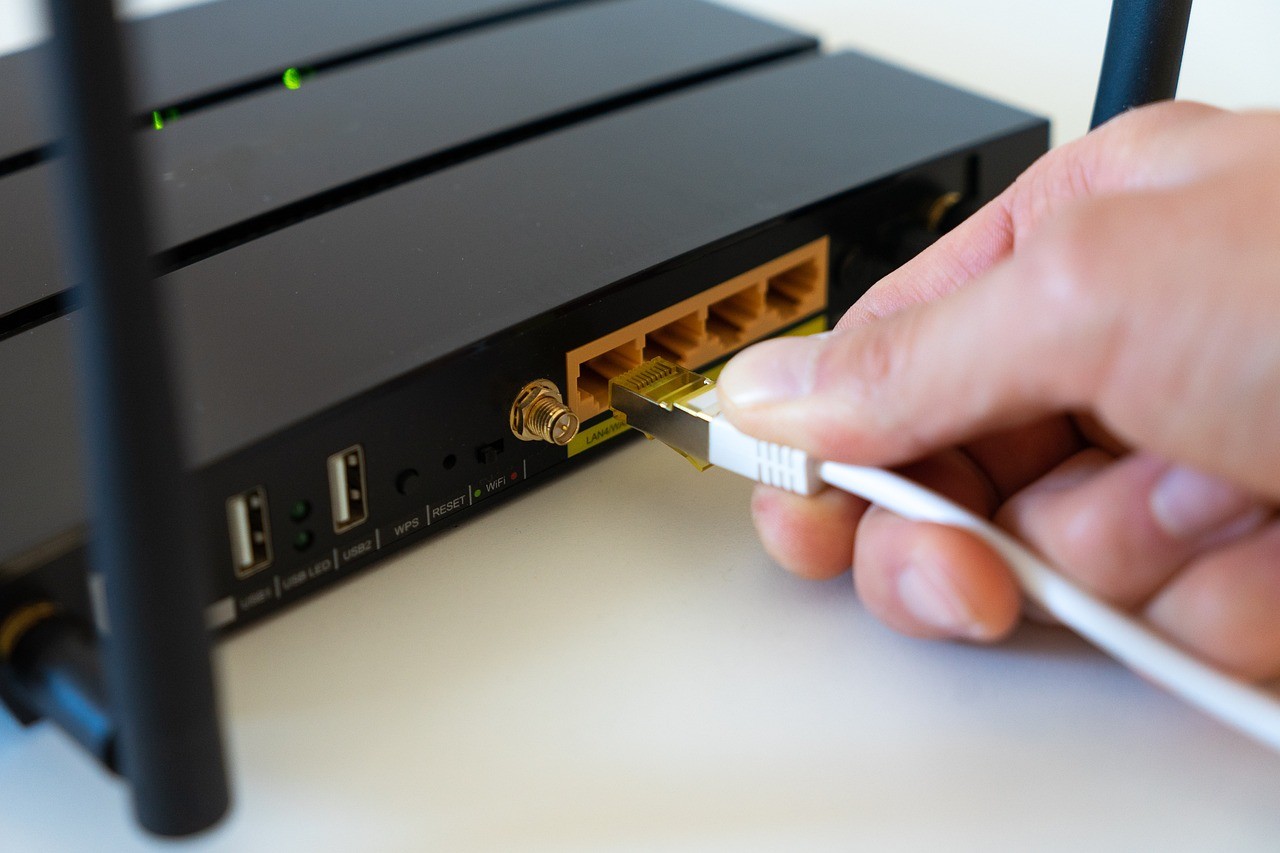How do you pick the omnidirectional outdoor TV antennas that will give you the most channels? Start by reading this. We studied hundreds of omnidirectional antennas from dozens of manufacturers. We found the best.
Here they are. Make sure you read about the crucial features and frequently asked questions following these reviews. We want you to make the best choice.
Best Omnidirectional Outdoor TV Antennas:
1. LAVA HD8008 Omnidirectional 360 Degree HD TV 4K Omnipro TV Antenna
This is the omnidirectional HDTV antenna for suburban and rural applications because of its ideal range of 40-80 miles. Closer signals may be too strong if there are no obstacles between the tower and the antenna.
Under optimum conditions, this antenna can pull in broadcasts from 130 miles away.
It comes with everything you need to run up to four TVs off of it, including a splitter. But it only includes 16 feet of coax, so you’ll have to get more to run more than one TV.
People enjoy the great HDTV reception they get. They also like that it comes with almost everything they need to mount the antenna and connect up to four TVs to it. All they have to buy is an extra coax cable.
Pros
- Good range
- The mounting kit includes a J-pole, wall bracket, hardware, and 16 feet of coax
Cons
- Signals from very close sources may overpower the amp and not come in clearly
- Very strong 3G and 4G signals may cause interference in some circumstances
2. 1byone Outdoor TV Antenna 360° Omni-Directional Reception Long 100+ Miles Range Enhance VHF&UHF 4K Ready HDTV Antenna
Here’s the long-range omnidirectional outdoor TV antenna for anyone who lives near cellular towers and experiences unexpected distortion. This antenna has a built-in RF pollution eliminator.
It also has a powerful amp. Close signals within about 15 miles may be distorted by signal overload, but transmissions from up to 90 miles away are often as clear as a bell.
Everyone is impressed with the reception they get. Everyone, that is, except for those who live within about 15 miles of the transmission towers for the channels they want. Close towers cause interference.
People who have had issues with cellular or other RF interference are in love with the RF-blocking technology of this antenna.
Pros
- Impressive max range
- Built-in amp
- Mounting hardware included
- RF-blocking tech improves reception in areas polluted with cellular pollution
Cons
- Close, strong broadcasts may experience intermittent distortion
3. ANTOP AT-415B 720° UFO Dual Omni-Directional Outdoor HDTV Antenna
Perhaps the reason this antenna scores so high in omnidirectional TV antenna ratings is its smart amp. It doesn’t amplify close signals or those that are already strong, so there’s no risk of distortion from signal overload.
It can supply a signal to up to four TVs, but the splitter is not included. The mounting hardware isn’t included either. All you get along those lines is a J-pole clamp.
This may be the digital antenna for you if you live close to transmission towers but also want longer-range broadcasts.
There haven’t been many complaints about this antenna. But people who live close to broadcast towers talk about how good it feels to not have to worry about signal overload anymore.
Pros
- Very good close and long-range reception
- Built-in smart amp
- Easy to mount
Cons
- Doesn’t include mounting hardware
4. 1byone 360° Omni-Directional Reception Amplified Outdoor TV Antenna Long Range
As far as HDTV antennas go, this one is one of the best for outdoor installation. Not only is it weatherproof, but it resists UV rays from the sun. The plastic shell won’t get brittle and crack.
It has a good amp, but you have to manually twist a knob to adjust the gain if you get overloaded from a close station or signal drop-off with a weaker signal.
There’s not any RF resistance either. You may want to keep looking if you live near cellular transmission towers.
In general, everyone is happy with the reception. The ease of installation often comes up when people talk about it.
One negative thing that people complain about in omnidirectional outdoor TV antenna reviews is the manual amp. People who regularly watch broadcasts from both close and distant transmitters don’t like having to adjust the amp when they notice distortion or want to watch a weaker signal.
Pros
- Good for close and far signal origins
- UV-resistant exterior endures constant sun exposure
- Easy to mount to poles up to 1-¾” in diameter
Cons
- No RF filter
- The amp has to be adjusted manually if signal overload or weak signal becomes apparent
5. Outdoor TV Antenna Omnidirectional Reception
This is a good antenna for high applications. Some who have mounted this one indoors have said that they’ve had to turn it sometimes to get the reception for broadcasts from different directions.
It does feature a smart amp that automatically adjusts for the optimum gain for signals of all strengths.
If you plan on mounting on a rooftop or a high pole, this may be a good one for you. But this probably isn’t the best for indoor reception.
Most people who use this antenna for short to mid-range broadcasts are happy with it.
But there have been complaints. Some people have said that it’s not truly omnidirectional. They claim they’ve had to rotate it for the best reception. This is why we only recommend it for high installations.
Pros
- Integrated RF filter
- Smart amp built-in
Cons
- Should be installed high to ensure omnidirectional functionality
6. KING OA1501 OmniGo Portable Omnidirectional HDTV Over-the-Air Antenna – Black
Although it works just fine as a home antenna, this one is made for travelers and campers.
It can be magnetically mounted atop an RV. It has a coax feed, so it can go right through the cable port on a camper. It can also be mounted on the included tripod. The tripod is just a couple of feet tall, though.
The amp runs on DC or AC, so there’s no adaptor needed if you go from home to RV use. That amp isn’t adjustable, so very strong signals may go in and out.
There’s no RF filter either. That may cause a problem in high radio interference areas.
People who travel in campers and RVs really like this one. They say it outperforms any other portable antenna of this type.
Pros
- Portable
- Two mounting options: on top of a camper or RV or tripod-mount
- AC/DC
- Amplified, unlike most other portable omnidirectional antennas
Cons
- No RF filter
- Amp is not adjustable for gain
7. ANTOP Outdoor TV Antenna, 360° Omnidirectional HDTV Antenna
This antenna has the same type of RF filter and amp that other great omnidirectional antennas have. But the amp isn’t exactly smart. It has to be switched off if there’s a signal overload from a super strong transmission from a closed tower.
It’s easy to mount to a J-pole, but it’s big and square. It’s best to mount this one in an attic or other out-of-the-way place.
Most who buy this antenna mount it in their attics. They say that they get a really good reception like that.
There have been some complaints about the switchable amp in omnidirectional digital TV antenna reviews, though. People who live close to some broadcast towers but far from others don’t like to have to switch the amp on and off for optimum reception.
Pros
- A good range for most areas
- Built-in RF filter
- Easy to mount with included J-pole hardware
Cons
- Some consider the wide, flat design to look awkward and bulky
- The amp has to be manually switched off to receive clear close-range transmissions
Factors To Consider
Here’s what the heavily advertised features and specifications mean and how to choose based on them.
Range
There are two types of range: maximum and ideal. The maximum range is the longest distance from which an antenna can receive a signal under perfect conditions. That means no obstructions, pristine weather conditions, and a strong transmitted signal.
A more realistic metric is the ideal range. It tells you how far of a reach you’ll have under normal circumstances with minimal instructions.
Look at this map. Enter your address. It will tell you how far away each station’s broadcast tower is in your viewing area. Get an antenna that has a range capable of receiving the channels you want.
Amplifiers
Amplifiers boost the signals they receive before sending them on to the TV. The strongest omnidirectional TV antennas always have amps.
They work best when they’re working with signals originating from about 35 to 150 miles away. Closer signals may get too amplified and not be viewable.
Smart amps detect a signal’s strength and only amplify it if it needs to be. Antennas with smart amps are great if you live within 20 miles of some of the broadcasts you want.
If you live within about 20 miles of all the towers you’ll be receiving a signal from, you may not need an amp at all. But if you’ll be pulling in channels from further than 20 miles, you need an amp.
If you plan on using a splitter to send the antenna’s signal to multiple televisions, you should have an amp. It’ll make sure each TV has a strong enough signal to show a picture.
RF Filters
These block signals from FM, 3G, and 4G sources that may interfere with your reception. These undesirable signals usually come from close cell and radio broadcasting towers. The distortion usually comes in the form of flashes or freezing of the TV’s picture.
If you’ve had unexplained, random distortion while using an antenna in the past, make sure you get an antenna with an RF filter.
Portability
Some antennas are good for travel. They are small and often come with tripods or magnetic bases so they can be mounted at campsites or on top of RVs.
The RV omnidirectional TV antennas have the same features that home antennas do. You’ll probably still need an amp and RF filter.
FAQs
Here are the questions we’re asked the most.
Will An Omnidirectional Antenna Improve My Reception?
Even the omni TV antenna can’t improve reception unless it has a better amp than your current antenna. An omnidirectional antenna’s main advantage is that it doesn’t have to be rotated to point toward the desired signal source.
Where Does An Omnidirectional Antenna Have To Be Mounted?
The same rules that apply to directional antennas apply here.
Ideally, TV antennas should be mounted outdoors as high as possible. That keeps your home’s walls from obstructing and weakening broadcast signals. Being high may keep the antenna above many distant instructions, like buildings and hills.
This isn’t necessary, however. It all depends on how far you are from the signal you’re trying to pull in and what’s in the way. Try your antenna where you want it. If it works, that’s great. If not, try moving it outdoors or mounting it higher.
How Can I Get The Most Channels With An Omnidirectional Antenna?
Omnidirectional antennas pull in signals from all directions, so you won’t have to worry about rotating them for the best reception.
The most powerful omnidirectional TV antennas all have amps, so make sure the one you get does.
If you live close to some broadcasting towers, get an antenna with a smart amp. You don’t want to lose those close ones.
Mount it as high as possible and try to place it as far away from trees and buildings as you can.
To get the most channels, you have to have a good amp and the fewest obstacles between the signal sources and the antenna.



